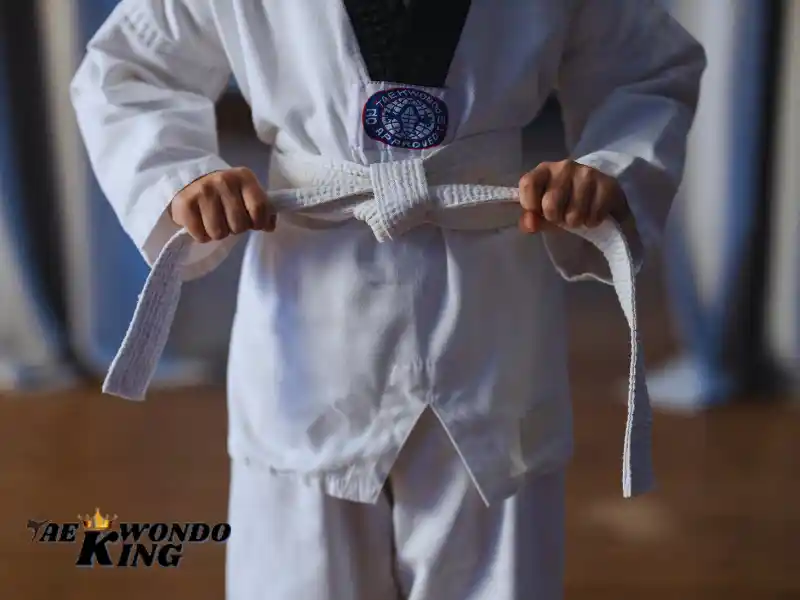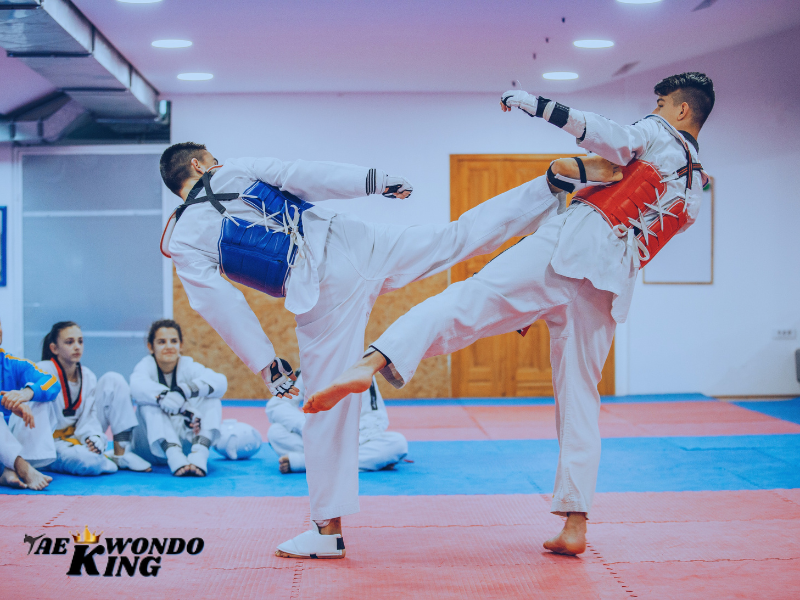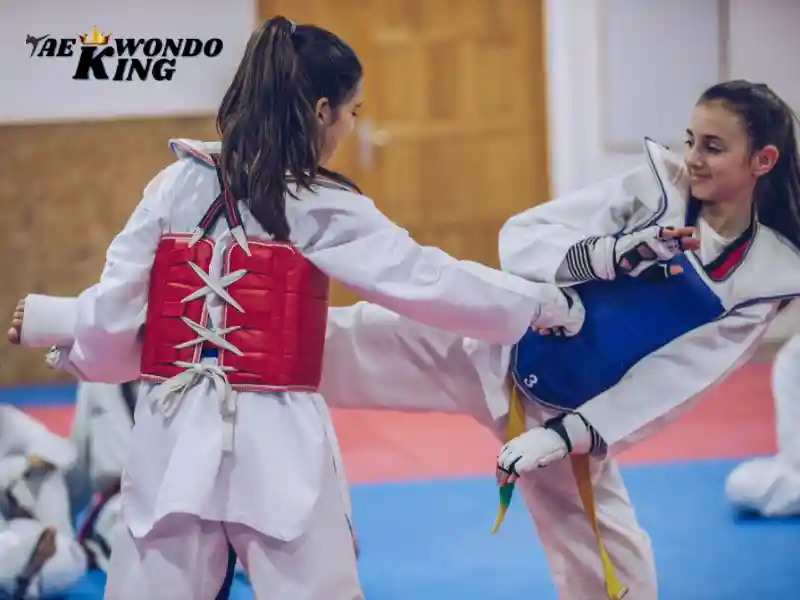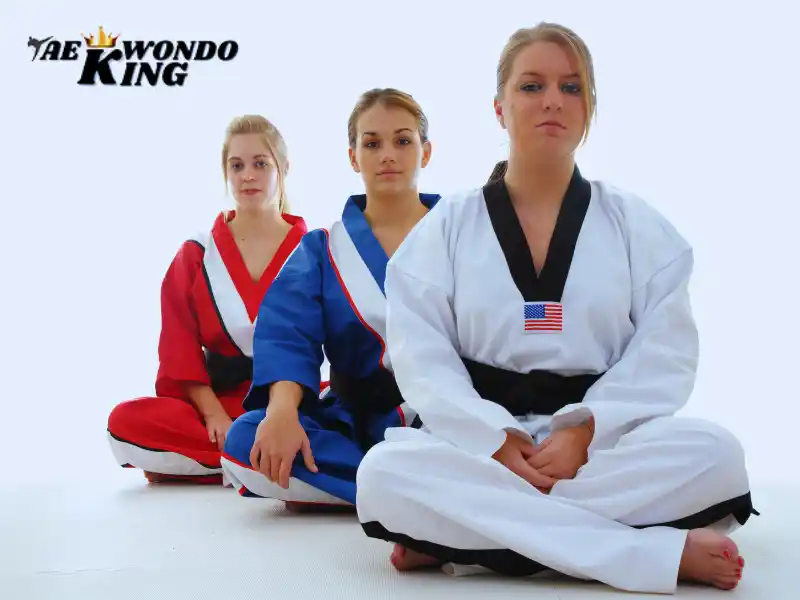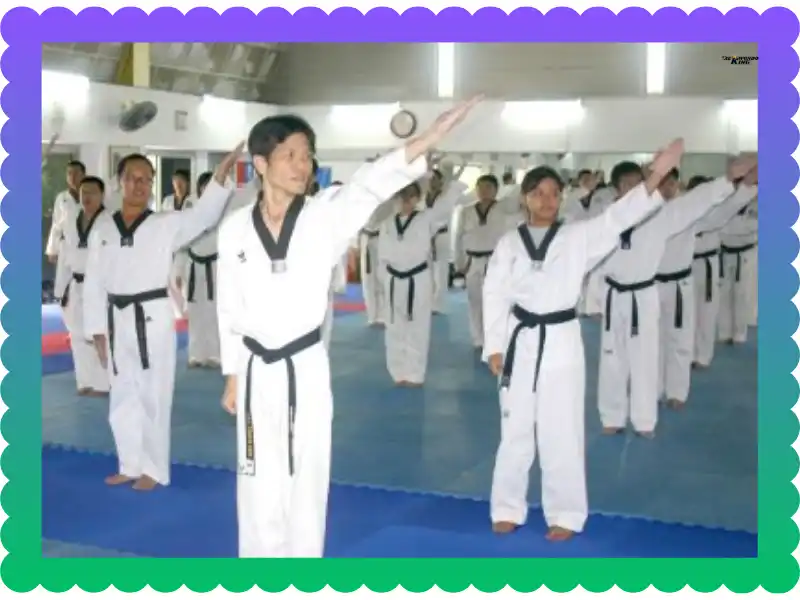
Have you ever watched a Taekwondo Poomsae competition and wondered how the judges score those graceful moves so precisely? I’ve been there. At first, it looked like magic , until I learned the exact rules set by the World Taekwondo Federation (WTF). Today, I’ll walk you through those Poomsae Scoring Guidelines in a simple, friendly way you can actually enjoy reading.
See the latest Top-Rated Adjustable Dumbbells Set Price Today Used by Champions.

What Is Poomsae Scoring?
In Taekwondo, Poomsae means a sequence of movements showing defense and attack.
Every motion, stance, and breath reflects control, balance, and focus.
The Poomsae scoring system judges two main areas:
- Accuracy (4.0 points)
- Presentation (6.0 points)
Together, they total 10.0 points.
Accuracy checks if your techniques follow the standard forms.
Presentation shows your power, rhythm, and spirit.
If a move is wrong or unbalanced, the judge deducts points , usually –0.1 to –0.3 depending on how serious the error is.
Accuracy (4.0 Points)
Basic Movements
Judges check if your stances (Seogi), blocks (Makki), punches (Jireugi), and kicks (Chagi) match the official standard from the World Taekwondo Federation.
A small error like a misplaced foot or bent elbow? That’s –0.1.
A bigger one, like doing the wrong movement? –0.3.
Balance and Stability
Ever lost balance in a stance? That costs points too.
The Poomsae scoring system values control. If you wobble, step off line, or lose posture, deductions apply.
Referees focus on how still and stable you remain throughout each transition.
Presentation (6.0 Points)
Now, this is the fun part , how you express Taekwondo.
Presentation brings your performance to life. It’s divided into:
- Power and Speed (2.0 points) – Show strong techniques but stay smooth.
- Rhythm and Tempo (2.0 points) – Each move should flow naturally like a story.
- Expression of Energy (2.0 points) – Let your inner spirit (kihap) shine.
Good presentation feels natural , not rushed, not robotic.
Think of it like dancing with purpose.
See the latest Top-Rated Adjustable Dumbbells Set Price Today Used by Champions.

The Foundation: Taekwondo Stances (Seogi)
Stances build your entire Poomsae.
Here are some key ones from the WTF guide:
- Moa Seogi (Closed Stance): Feet together, upright posture.
- Naranhi Seogi (Parallel Stance): One foot-length apart, toes forward.
- Ap Seogi (Walking Stance): Front foot forward, back foot angled 30°.
- Juchum Seogi (Riding Stance): Feet apart, knees bent, equal weight.
- Apkubi (Forward Stance): 70% weight front, 30% back.
- Dwitkubi (Back Stance): 70% weight back, 30% front.
- Beom Seogi (Tiger Stance): 90% weight on the back leg.
- Hakdari Seogi (Crane Stance): One leg up, balance perfectly.
Each incorrect stance means a –0.1 deduction.
I learned this the hard way during my first belt test!
Blocks (Makki)
Blocking is all about protection. Common blocks include:
- Arae Makki (Low Block): Arm straight, two fists from the thigh.
- Olgul Makki (High Block): One fist above the forehead.
- Momtong Makki (Middle Block): Arm at 90–120°, elbow down.
- Sonnal Makki (Knifehand Block): Palm open, blade facing out.
- Momtong Bakkat Makki (Outer Middle Block): Elbow down, wrist straight.
Every incorrect motion costs –0.1.
The World Taekwondo Federation emphasizes elbow angle and alignment.
Punches (Jireugi)
Punching might look simple, but it’s full of detail:
Rotate your fist at the last moment, keep your wrist straight, and hit with the front knuckles.
Main types:
- Baro/Bandae Jireugi (Middle Punch)
- Olgul Jireugi (High Punch)
- Yop Jireugi (Side Punch)
- Dujumeok Jecho Jireugi (Double Uppercut)
Each one has a unique rhythm and distance.
During competition, timing and hip twist make all the difference.
Strikes (Chigi)
Strikes use elbows, fists, and even knifehands:
- Deungjumeok Ap Chigi (Backfist Front Strike) – Hit the nose area.
- Olgul Bakkat Chigi (High Outer Strike) – Target the temple.
- Palkup Dollyo Chigi (Elbow Hook) – Aim at the jaw.
- Palkup Yop Chigi (Side Elbow Strike) – Use both hands for power.
Each one teaches control. Judges watch for over-extension or poor recovery.
Kicks (Chagi)
Every Taekwondo practitioner loves kicks, right?
But in Poomsae scoring, precision beats height.
- Ap Chagi (Front Kick): Lift, extend, pull back, land smoothly.
- Dollyo Chagi (Roundhouse Kick): Circle motion, hit with instep or ball.
- Yop Chagi (Side Kick): Kick forward, turn hips, hit with foot blade.
Judges look for a clean path, full extension, and good recovery.
Incorrect kicks lead to –0.1 deductions each.
Korean Terminology You’ll Hear Often
Every Taekwondo referee uses Korean names to call movements.
Here are a few you’ll recognize in competition:
- Seogi (Stance)
- Makki (Block)
- Jireugi (Punch)
- Chigi (Strike)
- Chagi (Kick)
Knowing these helps you follow the scoring better.
How Judges Actually Score (The Score Sheet Explained)
Judges use a Poomsae score sheet issued by the World Taekwondo Federation.
| Category | Sub-category | Points | Notes |
|---|---|---|---|
| Accuracy | Basic & Individual Movements | 4.0 | Deduct –0.1 to –0.3 per error |
| Presentation | Power, Rhythm, Expression | 6.0 | Based on performance quality |
| Total | 10.0 |
Judges must sign with their name, nation, and signature for validation.
Everything is transparent and standardized.
Free Style Poomsae Scoring (For Advanced Players)
There are two versions of Free Style Poomsae rules:
Old Version (Until 2013)
- Technical Skills: 6.0
- Presentation: 4.0
- Foot Technique Difficulty: 3.0
- Completion and Accuracy: 1.5 each
New Version (From 2014)
- Technical Skills: 6.0
- Foot Technique Difficulty: 5.0
- Basic Movement & Practicability: 1.0
- Presentation: 4.0 (Creativeness, Harmony, Expression, Music, Choreography)
It’s exciting to see creativity valued more now.
Still, control and accuracy remain the heart of every score.
Common Deductions Summary
| Mistake | Deduction |
|---|---|
| Small error | –0.1 |
| Wrong movement | –0.3 |
| Loss of balance | –0.3 |
| Fall or skip | –0.5 or more |
I’ve seen competitors lose medals over a single balance slip.
Staying calm and grounded is key.
See the latest Top-Rated Adjustable Dumbbells Set Price Today Used by Champions.

Why This System Matters
The Poomsae scoring system keeps Taekwondo fair worldwide. It rewards both discipline and creativity. Athletes grow not just stronger but more mindful , every motion has purpose.
When I first judged a Poomsae match, I realized something beautiful:
Scoring isn’t just about points. It’s about honoring the spirit of Taekwondo itself.
Final Thoughts
Understanding the Poomsae Scoring Guidelines helps you respect what goes into each bow, block, and breath.
Whether you’re a student, a coach, or a referee, learning these rules gives you a deeper appreciation for Taekwondo’s precision and grace.
So next time you watch a Poomsae event, you’ll know , every move tells a story, and every score reflects years of discipline.
References:
World Taekwondo Federation – Poomsae Scoring Guidelines for International Referees (Official PDF Document)
FAQs
Judges deduct –0.1 to –0.3 for mistakes in form, balance, or rhythm.
Aristeidis Nikolaos Psarros of Greece is currently ranked number one in World Taekwondo Poomsae. This ranking is based on accumulated points from competitions.
Poomsae 7 is called Taegeuk Chiljang. It is the seventh training pattern in Taekwondo.
Poomsae 4 is called Taegeuk Sajang. It is the fourth Taekwondo form.
Poomsae 8 is called Taegeuk Paljang. It is the eighth and final Taegeuk pattern for colored belts.
Poomsae 1 is called Taegeuk Iljang. It is the first training pattern in Taekwondo.
Poomsae 6, or Taegeuk Yookjang, has 23 movements. These movements use 31 techniques.
Scoring is mainly done using an electronic system in the protective gear. Points are given for valid punches and kicks to the torso and head. More points are given for kicks to the head and for spinning kicks.
The total possible score is 10 points , 4 for accuracy and 6 for presentation.
You get five points in a Taekwondo match by landing a valid turning kick to the opponent’s head. This is the highest value score.
There are eight Taegeuk poomsae for the colored belt (Kup) grades. There are nine more poomsae for black belt (Dan) grades.
There are a total of 17 official poomsae from the Kukkiwon. This includes the eight Taegeuk forms and nine advanced Black Belt forms.
The World Taekwondo Federation (WTF) publishes and updates them for all international referees.
Free Style allows creative movements, music, and choreography, while standard focuses strictly on technical forms.
See the latest Top-Rated Adjustable Dumbbells Set Price Today Used by Champions.


Founder, Owner, and CEO of TaekwondoKing.
He is one of the top 100 martial artists in the World and among the top 20 referees in Bangladesh.
Ehatasamul Alom is an esteemed Kukkiwon Certified Taekwondo 3rd Dan Black Belt with over 15 years of experience in this dynamic martial art. Born in Rajshahi, Bangladesh, Ehatasamul’s journey with Taekwondo began at the tender age of seven. His passion led him to compete at national and international levels, where he has bagged numerous awards and honors. He is also a member of the Taekwondo National Referee Panel.
With a Bachelor’s degree in Sports Science from the prestigious Rajshahi University, Ehatasamul has a deep understanding of the technical and scientific aspects of martial arts and some other martial arts.
In 2022, Ehatasamul created the “TaekwondoKing.com” to share his knowledge, Free Resources, Values, and Real experiences. His articles focus on Taekwondo training techniques, competition strategies, Sport Products Reviews, and the art’s rich history and philosophy. He also writes about the importance of mental fortitude and discipline, key aspects of his teaching philosophy. He has already launched many sports, Taekwondo, and health-related Free online tools. His goal is to inspire both beginners and seasoned practitioners worldwide through insightful and engaging content.
If you need any help, contact Ehatasamul Alom at any time.

